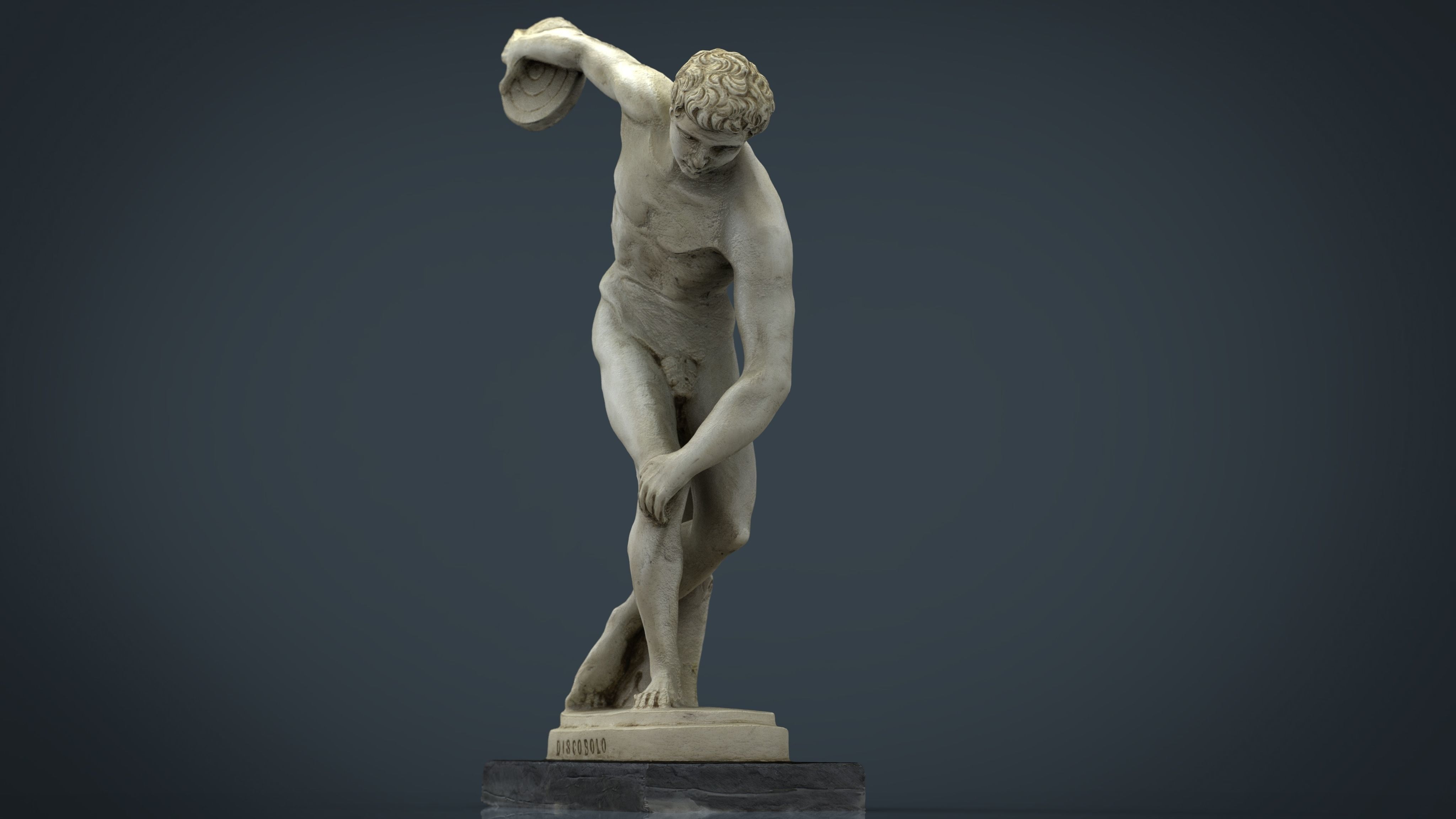
The Discobolus of Myron Low-poly 3D model
3D HD Model of The Discobolus of MyronFiles in Winrar Archives.
Native Format is Autodesk Maya 2008 and upLocated in Scene XYZ=0,0,0
Incluides files in Winrar Archive:
.:::Formats:::.
HIGH POLY with textures (.obj.fbx.mb .3ds ).STL
LOW POLY with textures (.obj.fbx.mb .3ds)
.:::Textures::::.
-Color -Bump-Normal Map
8192x8192 / .jpg 4096x4096.jpg in low poly model
Enjoy;)
Thanks for Watching!
The Discobolus of Myron ('discus thrower', Greek: , Diskoblos) is a Greek sculpture that was completed toward the end of the Severe period, circa 460450 BC. The original Greek bronze is lost but the work is known through numerous Roman copies, both full-scale ones in marble, which was cheaper than bronze,[1] such as the first to be recovered, the Palombara Discobolus, and smaller scaled versions in bronze.
A discus thrower is depicted about to release his throw: 'by sheer intelligence', Kenneth Clark observed in The Nude, 'Myron has created the enduring pattern of athletic energy. He has taken a moment of action so transitory that students of athletics still debate if it is feasible, and he has given it the completeness of a cameo.'[2] The moment thus captured in the statue is an example of rhythmos, harmony and balance. Myron is often credited with being the first sculptor to master this style. Naturally, as always in Greek athletics, the Discobolus is completely nude. His pose is said to be unnatural to a human, and today considered a rather inefficient way to throw the discus.[3] Also there is very little emotion shown in the discus thrower's face, and 'to a modern eye, it may seem that Myron's desire for perfection has made him suppress too rigorously the sense of strain in the individual muscles,'[2] Clark observes. The other trademark of Myron embodied in this sculpture is how well the body is proportioned, the symmetria.
The potential energy expressed in this sculpture's tightly wound pose, expressing the moment of stasis just before the release, is an example of the advancement of Classical sculpture from Archaic. The torso shows no muscular strain, however, even though the limbs are outflung.


















